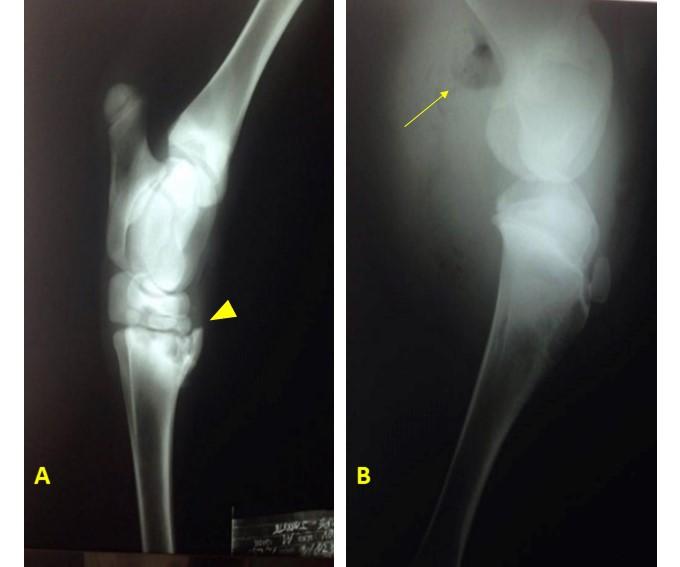Clinical, imaginological and pathological aspects of umbilical panvasculitis in calves: case report
DOI:
https://doi.org/10.21708/avb.2021.15.1.9458Abstract
The diagnosis of umbilical infections in neonates can be obtained from clinical signs, but the intracavitary involvement of structures and associated complications can be underestimated, compromising the establishment of adequate therapeutic approaches or prognosis. This case report presents the clinical, imaging, pathological and microbiological aspects of an umbilical infection in calves. Physical examination of the animal identified apathy, low body score, increased volume in the umbilical region and joints. The abdominal palpation identified firm structures in topography of the arteries and umbilical vein. Imaging examinations of the abdomen and joints were performed. Multiple, hyperechogenic focal structures have been identified in the liver, as well as cylindrical and firm structures in topography of the arteries and umbilical vein. In the joints, osteolytic changes, periosteal reactions, subchondral sclerosis and formation of osteophytes were seen. Umbilical panvasculitis triggered arthritis and an infectious process in the liver, the case being assessed as having an unfavorable prognosis and the animal being referred for euthanasia. At necropsy, multifocal abscesses were observed in the pleura, ribs, omentum, spleen and liver. There was granulomatous exudate in the urinary vesicle. The affected joints presented thickening of the joint capsule with the presence of exudate. In the microbiological analysis of liver fragments, urinary vesicle content and joint exudate, Proteus mirabilis with resistance to antimicrobials was identified. Imaging studies collaborated with the establishment of the prognosis and conduct adopted, and must, whenever possible, be included in the clinical examination.
Downloads

Downloads
Pubblicato
Fascicolo
Sezione
Licenza
Autores que publicam na Acta Veterinaria Brasilica concordam com os seguintes termos: a) Autores mantém os direitos autorais e concedem à revista o direito de primeira publicação, com o trabalho simultaneamente licenciado sob a Licença Creative Commons Attribution que permite o compartilhamento do trabalho com reconhecimento da autoria e publicação inicial nesta revista. b) Autores têm autorização para assumir contratos adicionais separadamente, para distribuição não-exclusiva da versão do trabalho publicada nesta revista (ex.: publicar em repositório institucional ou como capítulo de livro), com reconhecimento de autoria e publicação inicial nesta revista. c) Autores têm permissão e são estimulados a publicar e distribuir seu trabalho online (ex.: em repositórios institucionais ou na sua página pessoal) a qualquer ponto antes ou durante o processo editorial, já que isso pode gerar alterações produtivas, bem como aumentar o impacto e a citação do trabalho publicado (Veja O Efeito do Acesso Livre).


 Esta obra está licenciada com uma Licença
Esta obra está licenciada com uma Licença 